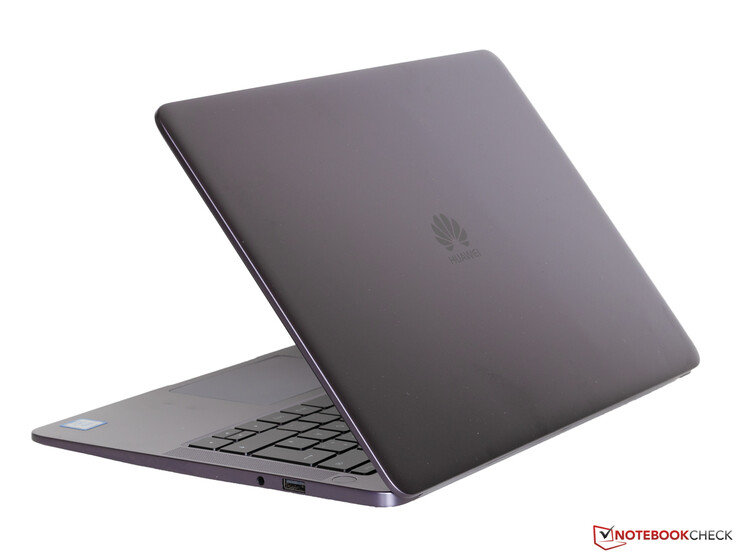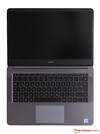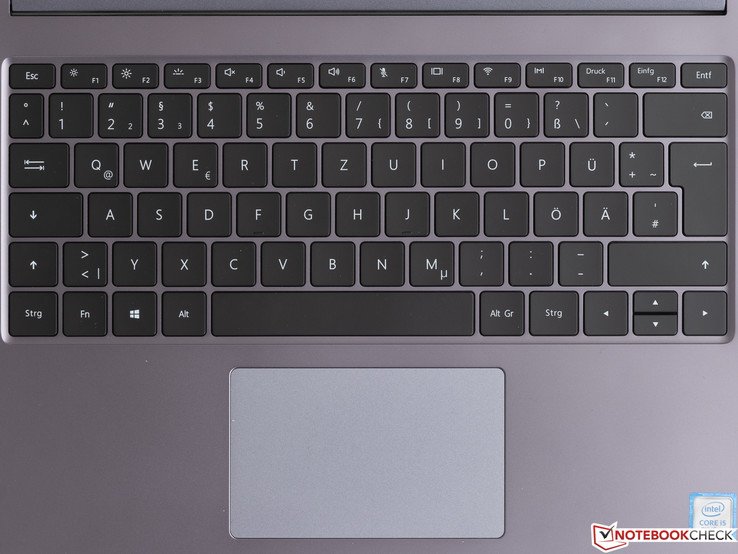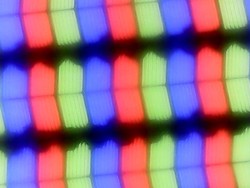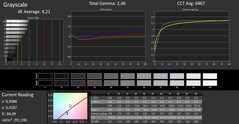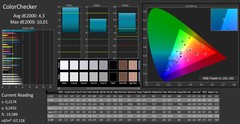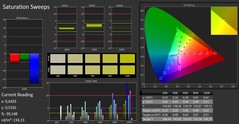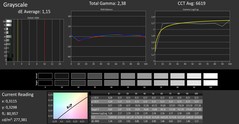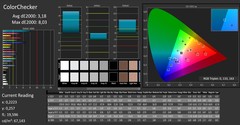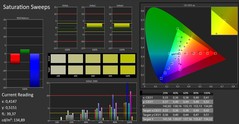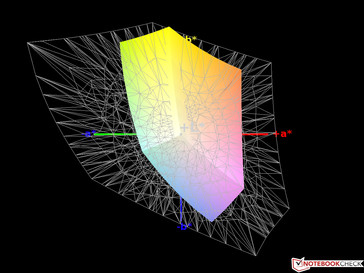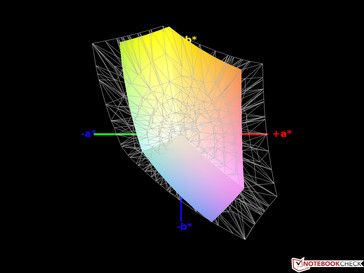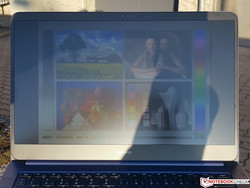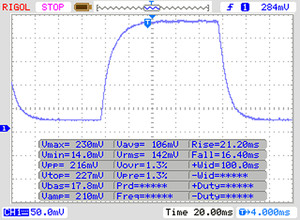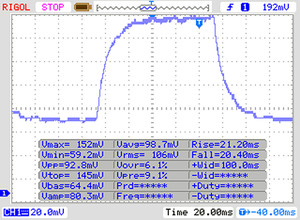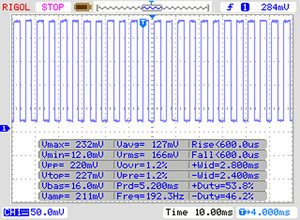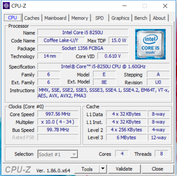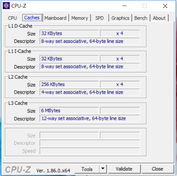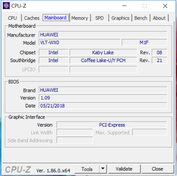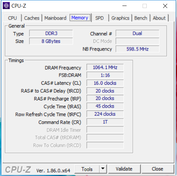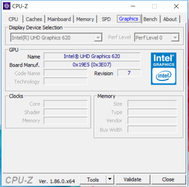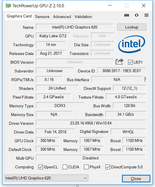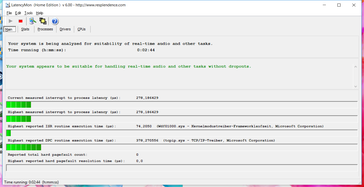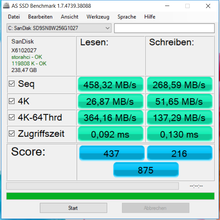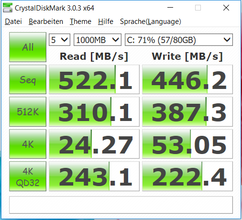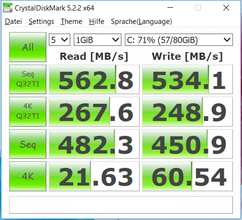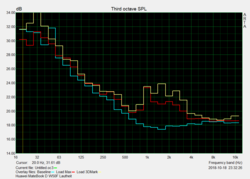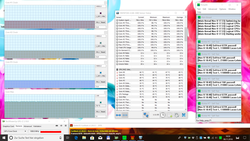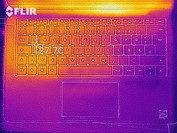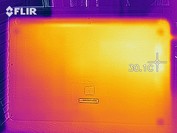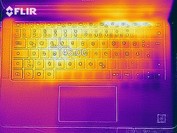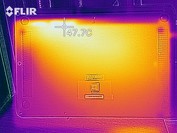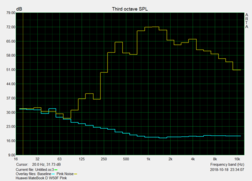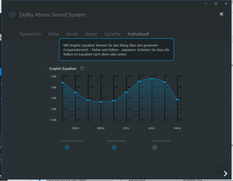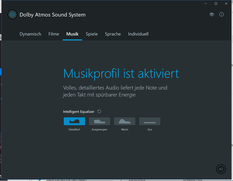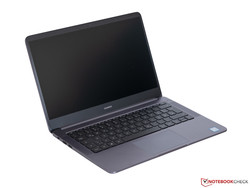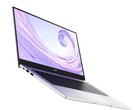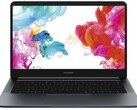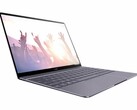Huawei MateBook D 14 W50F (Core i5-8250U, 8 GB, 256 GB) Laptop Review

The Huawei MateBook D 14 W50F is a relatively cheap and compact laptop that currently retails at 999 Euros (~$1,140/£887). The W50F succeeds the MateBook D (i7-7500U, GeForce 940MX) and reminds of us the current MacBook Pro, at least in Space Grey. Our test device is equipped with an Intel Core i5-8250U processor, a Full HD IPS display, 8 GB RAM and a 256 GB SSD. There is also a fingerprint sensor, and a Trusted Platform Module (TPM) 2.0 chip, while Huawei has preinstalled Windows 10 Home.
The W50F does not have a dedicated GPU. We would recommend checking out the W60B instead if you want a dGPU as the latter has an Nvidia GeForce MX150. The W60B costs around 200 Euros (~$230/£180) more than the W50F at the time of writing, but the former has a more powerful Core i7-8550U processor too. Huawei sells the W50F in either Space Grey or anthracite, the latter of which is the colour of our test device.
There are not that many similar laptops against which to compare the W50F. We have included 13.3-inch and 14-inch devices in our comparison table because the difference between the two screen sizes is minimal. Our primary comparison devices are the following:
| Manufacturer | Model | Display | Processor | Graphics | RAM | Storage | Price |
|---|---|---|---|---|---|---|---|
| HP | EliteBook 745 G5 3UN74A | 14-inches | AMD Ryzen 7 2700U | AMD Radeon RX Vega 10 | 8 GB | 256 GB | €1,399 ~ US $1,600 |
| MSI | PS42 8RB-059 Prestige | 14-inches | Intel Core i7-8550U | Intel UHD Graphics 620 & NVIDIA GeForce MX150 | 16 GB | 512 GB | $1,300 |
| Lenovo | IdeaPad 720S-13IKB | 13.3-inches | Intel Core i5-8250U | Intel UHD Graphics 620 | 8 GB | 256 GB | €999 ~ US $1,140 |
Case
The W50F largely looks like its predecessor. At first glance, the only changes appear to be the inclusion of the Huawei logo and a different arrangement of the ports. The colours of the bottom case and display hinge have changed too. The device also apes the unibody design that we have seen on recent MacBooks, although the case is clearly two pieces of metal. Huawei refers to the device’s metal surfaces in its promotional material, the validity of which we can confirm with our test device; the W50F looks and feels like it is made entirely from metal besides its four rubber feet.
Unfortunately, the laptop has a slippery finish, which is prone to picking up fingerprints. The W50F has a minimalist and industrial design, with the only noticeable embellishments being the Huawei branding, the speaker grilles that flank the keyboard and the circular fingerprint sensor.
Our test device is robust, but it is not as sturdy as it looks. We can easily twist the case with our hands, which audibly creaks as we do so. The display lid is well built too, although we could get the display to distort slightly when we applied pressure to the lid with our hands. Unfortunately, the hinges are too stiff to open our test device with one hand. However, the display hardly bounces in daily use, which is positive.
In short, our test device is a well-built laptop with even and tight gaps between all materials. Overall, the case looks like it belongs to a considerably more expensive business laptop.
The W50F has a comparatively small footprint, but it is rather heavy at 1.5 kg. Our test device is 16 mm thick (0.63-inches), which is 2.4 mm (0.09-inches) thicker than the IdeaPad 720S-13IKB despite the latter having a smaller display. The W50F is smaller than our other comparison devices too. However, our test device is 300 g (10.60-oz) and 400 g (14.1-oz) heavier than the IdeaPad 720s-13IKB and the PS42 8RB Prestige respectively, while also being the same weight as the EliteBook 745 G5.
Connectivity
Huawei has equipped the W50F with what we would consider the basic selection of ports for a $1,000 laptop released in 2018. The W50F has two USB Type-A ports, a USB Type-C port, an HDMI port and a headphone jack. One of the three USB ports operates at the slower USB 2.0 standard, while only the Type-C port is USB 3.1. The ports are well spaced out and are along the rear edges of the sides of the device. Buyers should not experience any issues with cables obscuring other ports with the W50F.
Communication
Huawei has equipped our test device with an Intel Dual Band Wireless-AC 8265 Wi-Fi card, which has a 2x2 MIMO antenna that supports Bluetooth 4.1 and can achieve up to 867 Mb/s network speeds. Our test device achieved over 500 Mb/s in both iperf3 Client Wi-Fi tests when tested with our Linksys EA8500 reference router, which is above average and puts it well ahead of the PS42 8RB Prestige and the IdeaPad 720s-13IKB. The EliteBook 745 G5 finishes around 100 Mb/s short of our test device in the receive test but edges the W50F by 3 Mb/s in the transmission test. The EliteBook has an RJ45 Ethernet port though, which the W50F lacks.
| Networking | |
| iperf3 transmit AX12 | |
| HP EliteBook 745 G5 3UN74EA | |
| Huawei MateBook D 14 W50F | |
| Lenovo Ideapad 720S-13IKB | |
| MSI Prestige PS42 8RB-059 | |
| iperf3 receive AX12 | |
| Huawei MateBook D 14 W50F | |
| HP EliteBook 745 G5 3UN74EA | |
| MSI Prestige PS42 8RB-059 | |
| Lenovo Ideapad 720S-13IKB | |
Security
The W50F has a TPM 2.0 chip and a fingerprint sensor, the latter of which supports Windows Hello. The fingerprint sensor quickly and reliably unlocked our test device throughout testing. There is no BitLocker drive encryption though because this is reserved for Windows 10 Pro. Huawei preinstalls Windows 10 Home on the W50F, but users could purchase a Pro licence for $99 (£119.99) from the Microsoft Store if they need BitLocker among the other features that a Pro licence adds.
Accessories
Our test device came with a USB Type-C charger, a warranty card and a quick-start guide. Huawei does not currently sell any W50F specific accessories.
Maintenance
The W50F does not have a maintenance cover nor can users remove its battery without removing the bottom case, which is held in place by nine Torx screws. We chose not to remove the bottom case as there was a risk that we could damage our test device, which notebooksbilliger.de kindly lent us.
Warranty
We could not clarify the length of warranty coverage that our test device has because Huawei does not state so on its website nor did its serial number check work at the time of testing. Some sources claim that the W50F has 12 months manufacturer’s warranty, while others state 24 months. Either way, buyers in the EU and in the US will also have warranty coverage from whichever third-party supplier that the W50F is bought from. Please see our Guarantees, Return policies and Warranties FAQ for country-specific information.
Input Devices
Keyboard
The W50F has a chiclet keyboard that is slightly recessed into the top case and is as wide as a desktop keyboard. The keys are flat, large and well labelled, although the stroke is too short for our liking. The keys have good pressure points though. Most keys are cushioned well, but the space bar and enter key are noticeably noisier. They are so loud that we could recommend against vigorously typing in noise-sensitive environments. The keyboard deck is sturdy too and we could only depress it by applying more pressure that users would normally apply when just typing. The keyboard also has two-stage backlighting that uniformly and brightly lit the keys when using our test device in dark environments.
Trackpad
The trackpad has a smooth finish that is even easy to use with slightly damp fingers. We struggled to use the trackpad with clammy hands, but this is the case with most trackpads. The trackpad is precise and responsive overall, albeit the outermost edges are not as reliable as the centre of the trackpad. The trackpad uses Windows Precision drivers and is large enough for multi-finger gestures.
We particularly like the integrated mouse buttons. Both buttons have a short stroke, a crisp pressure point and provide clear acoustic feedback.
Display
The 14-inch IPS display is not one of the W50F’s strengths, just as was the case with its predecessor. Our test device achieves an average maximum brightness of 276 cd/m² according to X-Rite i1Pro 2, a value that is resoundingly beaten by the EliteBook 745 G5 and one which is not good enough for a $1,000 laptop. Overall, the W50F finishes third in our comparison table in this regard and is only marginally above the PS42 8RB Prestige, which has an average maximum luminosity of 269 cd/m².
Our test device has an 85% evenly lit display, which is on par with our comparison devices. However, there is significant backlight bleed in the corners and the left-hand side of the display, which we can even notice under normal lighting conditions. Huawei does not offer any other display with the W50F.
| |||||||||||||||||||||||||
Brightness Distribution: 85 %
Center on Battery: 294 cd/m²
Contrast: 633:1 (Black: 0.46 cd/m²)
ΔE ColorChecker Calman: 4.3 | ∀{0.5-29.43 Ø4.77}
calibrated: 3.18
ΔE Greyscale Calman: 4.21 | ∀{0.09-98 Ø5}
64% sRGB (Argyll 1.6.3 3D)
41% AdobeRGB 1998 (Argyll 1.6.3 3D)
44.62% AdobeRGB 1998 (Argyll 3D)
64% sRGB (Argyll 3D)
43.19% Display P3 (Argyll 3D)
Gamma: 2.46
CCT: 6867 K
| Huawei MateBook D 14 W50F BOE0764 / TV140FHM-NH0, , 1920x1080, 14" | Lenovo Ideapad 720S-13IKB LG Philips LGD04EF, , 1920x1080, 13.3" | HP EliteBook 745 G5 3UN74EA AUO383D, , 1920x1080, 14" | MSI Prestige PS42 8RB-059 CMN N140HCE-EN2, , 1920x1080, 14" | |
|---|---|---|---|---|
| Display | 38% | 40% | 55% | |
| Display P3 Coverage (%) | 43.19 | 64.3 49% | 61.3 42% | 67.5 56% |
| sRGB Coverage (%) | 64 | 82.3 29% | 87.6 37% | 98.6 54% |
| AdobeRGB 1998 Coverage (%) | 44.62 | 60.2 35% | 62.3 40% | 69.6 56% |
| Response Times | 24% | 24% | 25% | |
| Response Time Grey 50% / Grey 80% * (ms) | 41 ? | 35 ? 15% | 35 ? 15% | 34.4 ? 16% |
| Response Time Black / White * (ms) | 37 ? | 25 ? 32% | 25 ? 32% | 24.8 ? 33% |
| PWM Frequency (Hz) | 200 ? | 131000 ? | 25000 ? | |
| Screen | 9% | 41% | 42% | |
| Brightness middle (cd/m²) | 291 | 335 15% | 421 45% | 285.4 -2% |
| Brightness (cd/m²) | 276 | 303 10% | 398 44% | 269 -3% |
| Brightness Distribution (%) | 85 | 85 0% | 86 1% | 86 1% |
| Black Level * (cd/m²) | 0.46 | 0.46 -0% | 0.27 41% | 0.31 33% |
| Contrast (:1) | 633 | 728 15% | 1559 146% | 921 45% |
| Colorchecker dE 2000 * | 4.3 | 5.09 -18% | 4.08 5% | 1 77% |
| Colorchecker dE 2000 max. * | 10.01 | 11.92 -19% | 7.48 25% | 3.65 64% |
| Colorchecker dE 2000 calibrated * | 3.18 | 0.98 69% | ||
| Greyscale dE 2000 * | 4.21 | 3.23 23% | 2.92 31% | 1.4 67% |
| Gamma | 2.46 89% | 2.18 101% | 2.32 95% | 2.25 98% |
| CCT | 6867 95% | 6214 105% | 7043 92% | 6699 97% |
| Color Space (Percent of AdobeRGB 1998) (%) | 41 | 54 32% | 57 39% | 63.82 56% |
| Color Space (Percent of sRGB) (%) | 64 | 82 28% | 87 36% | 98.91 55% |
| Total Average (Program / Settings) | 24% /
16% | 35% /
39% | 41% /
42% |
* ... smaller is better
The display also has long response times, which does not tend to be an issue for business or office notebooks. However, buyers should be wary of this if they choose the MX150-equipped W60B, as the response times may well be noticeable when gaming.
Our test device has a 0.46 cd/m² black value, which is on par with the IdeaPad 720S-13IKB but is considerably higher than the black values of our other comparison devices. The high black value and low maximum luminosity combine to create a disappointing 633:1 contrast ratio. We would expect to see a contrast ratio of at least 1,000:1 for a device at this price. By contrast, the EliteBook 745 G5 has an impressive 1,559:1 contrast ratio thanks to its superior black value and average maximum luminosity.
Things look better regarding colour accuracy though. The ideal DeltaE deviation is 3, the level below which the human eye cannot perceive colour inaccuracies. Our test device largely comes close to achieving this value for all DeltaE tests, but additional calibration can further improve colour accuracy, particularly with greyscale divergences. We have included our calibrated ICC profile in the box above our comparison table should you wish to use it. The colour profile is specific to our test device, but it should work with any W50F that also has a BOE0764/TV140FHM-NH0 display. Applying the ICC profile to a different display could worsen its colour accuracy.
By contrast, the PS42 8RB Prestige has excellent colour accuracy out of the box. Overall, the W50F is not colour accurate enough even for casual image-editing, primarily because of its poor colour-space coverage. Our test device has 41% AdobeRGB and 64% sRGB colour-space coverage, which is strikingly less accurate than our comparison devices. The PS42 8RB Prestige shines again here, achieving 64% AdobeRGB and 99% sRGB colour-space coverage. Our other two comparison devices are also colour accurate enough for occasional image and video-editing.
The W50F is relatively easy to use outdoors thanks to its display’s matte finish. The matte finish diffuses reflections that would otherwise overwhelm the dim display. We could comfortably use our test device in the shade on a sunny autumn day, but the display is simply not bright enough in direct sunlight. The difference in readability between the two lighting conditions is striking, as demonstrated by the two photos to the right. The W50F should also be bright enough for outdoor use on an overcast day, but we would still recommend avoiding brightly lit areas where possible for the best viewing experience.
Display Response Times
| ↔ Response Time Black to White | ||
|---|---|---|
| 37 ms ... rise ↗ and fall ↘ combined | ↗ 21 ms rise | |
| ↘ 16 ms fall | ||
| The screen shows slow response rates in our tests and will be unsatisfactory for gamers. In comparison, all tested devices range from 0.1 (minimum) to 240 (maximum) ms. » 95 % of all devices are better. This means that the measured response time is worse than the average of all tested devices (20.2 ms). | ||
| ↔ Response Time 50% Grey to 80% Grey | ||
| 41 ms ... rise ↗ and fall ↘ combined | ↗ 21 ms rise | |
| ↘ 20 ms fall | ||
| The screen shows slow response rates in our tests and will be unsatisfactory for gamers. In comparison, all tested devices range from 0.165 (minimum) to 636 (maximum) ms. » 64 % of all devices are better. This means that the measured response time is worse than the average of all tested devices (31.6 ms). | ||
Screen Flickering / PWM (Pulse-Width Modulation)
| Screen flickering / PWM detected | 200 Hz | ≤ 90 % brightness setting | |
The display backlight flickers at 200 Hz (worst case, e.g., utilizing PWM) Flickering detected at a brightness setting of 90 % and below. There should be no flickering or PWM above this brightness setting. The frequency of 200 Hz is relatively low, so sensitive users will likely notice flickering and experience eyestrain at the stated brightness setting and below. In comparison: 53 % of all tested devices do not use PWM to dim the display. If PWM was detected, an average of 8084 (minimum: 5 - maximum: 343500) Hz was measured. | |||
The W50F has weak viewing angles, which is uncommon for an IPS display. We noticed brightness and colour distortions at 45 ° viewing angles, an experience that we are more used to seeing with TN panels. In short, the W50F has one of the weakest IPS displays that we have ever tested.
Performance
The Core i5-8250U and fast SSD make the W50F powerful enough for demanding applications like Adobe Photoshop or any multi-core or Hyper-Threaded applications. The 8 GB of RAM could be a bottleneck for image or video-editing, for which we would recommend 16 GB.
Processor
The Intel Core i5-8250U is an ultra-low voltage (ULV) quad-core processor based on Intel’s Kaby Lake R architecture. The CPU has a 15 W thermal design power (TDP) and a 1.6 GHz base clock speed that can increase up to 3.4 GHz thanks to Intel Turbo Boost technology. The Core i5-8250U can also execute up to eight threads simultaneously with Intel Hyper-Threading.
The CPU is generally 40% faster in multi-core benchmarks than its predecessor, the Core i5-7200U, primarily because of its higher boost clock and core count. The Core i5-8250U integrates a DDR4 RAM controller and Intel UHD Graphics 620, which reduces CPU load by handling video encoding and decoding tasks among other graphically intensive tasks.
We subjected our test device to a loop of the Cinebench R15 multi-core benchmark to assess how well it maintains its peak performance. In short, the W50F scored higher than our Intel-powered comparison devices and finished just behind the Ryzen 7 2700U-powered EliteBook 745 G5.
Our test device initially scored 565 points in Cinebench R15, which is over 10% higher than the Core i5-8250U in the IdeaPad 720S-13IKB. It also outscored the Core i7-8550U in the PS42 8RB Prestige by the same margin, which is the more surprising of the two since the Core i7-8550U is theoretically the more powerful CPU. The W50F cannot initially compete with the EliteBook 745 G5 though, as its Ryzen 7 2700U scored above 600 points in the first three loops of the benchmark.
Our test device then dropped to 518 points in the second round and fluctuated between 518 and 526 points for the remainder of the benchmark loop. This equates to an acceptable 8% performance drop. The W50F finished the benchmark loop above the IdeaPad 720S and the PS42 8RB Prestige, although the margins between our test device and all our comparison devices had shrunk drastically. Overall, the Core i5-8250U utilises its Turbo Boost well, albeit not perfectly. Performance drops further when we tested the W50F on battery, but not drastically or unexpectedly so.
Overall, the W50F is considerably more powerful than the class average of office notebooks. Please keep in mind that this category includes much cheaper devices too that somewhat distort the average score.
System Performance
Our test device performed well in system performance benchmarks too. The W50F finished second to the PS42 8RB Prestige in all PCMark 10 benchmarks, primarily because the latter has a more powerful CPU and a dedicated GPU. However, it easily beats the EliteBook 745 G5 and outscores it by 30% in the overall PCMark 10 score, although we cannot explain why.
The W50F feels snappy and responsive in daily use. The OS boots quickly and we noticed no slowdowns during heavy multitasking despite the system having just 8 GB RAM.
Storage Devices
Huawei has equipped our test device with a SATA III SanDisk SSD. SATA III SSDs can only reach a maximum speed of 600 MB/s, which is considerably slower than their NVMe counterparts. Looking at our comparison table reveals the differences in transfer speeds. The IdeaPad 720S-13IKB crushes our test device in CrystalDiskMark 3.0 thanks to its Samsung PM961 NVMe SSD.
Users may not notice the difference between SATA III and NVMe SSDs in practice, but we would expect to see the latter in $1,000-laptops that are released in 2018.
| Huawei MateBook D 14 W50F SanDisk SD9SN8W256G1027 | Lenovo Ideapad 720S-13IKB Samsung PM961 MZVLW256HEHP | HP EliteBook 745 G5 3UN74EA Toshiba XG5 KXG50ZNV256G | Average SanDisk SD9SN8W256G1027 | |
|---|---|---|---|---|
| CrystalDiskMark 3.0 | 118% | 51% | 0% | |
| Read Seq (MB/s) | 522 | 1674 221% | 1549 197% | 506 ? -3% |
| Write Seq (MB/s) | 446.2 | 1191 167% | 269.7 -40% | 441 ? -1% |
| Read 512 (MB/s) | 310.1 | 658 112% | 823 165% | 308 ? -1% |
| Write 512 (MB/s) | 387.3 | 852 120% | 298.1 -23% | 347 ? -10% |
| Read 4k (MB/s) | 24.27 | 51.8 113% | 24.9 3% | 26.8 ? 10% |
| Write 4k (MB/s) | 53 | 114.9 117% | 97.1 83% | 54.4 ? 3% |
| Read 4k QD32 (MB/s) | 243.1 | 349.2 44% | 310.6 28% | 254 ? 4% |
| Write 4k QD32 (MB/s) | 222.4 | 332.2 49% | 208.4 -6% | 225 ? 1% |
Graphics Card
The UHD Graphics 620 can clock up to 1,100 MHz and is technically identical to its predecessor, the Intel HD Graphics 620. The integrated GPU shares its TDP with the CPU and can handle 2D tasks easily. The UHD Graphics 620 will struggle with 3D tasks though compared to dedicated GPUs like the GeForce MX150. Our test device noticeably outperforms the UHD Graphics 620 in the IdeaPad 720S-13IKB because the former runs in dual-channel mode. This means that Huawei has equipped the W50F with two 4 GB RAM modules compared to the one 8 GB module in the IdeaPad. Systems running in single-channel mode can be switched to dual-channel mode by adding a second identical RAM module; this is only possible with laptops that have SO-DIMM slots though. By contrast, the UHD Graphics 620 cannot compete with the Radeon RX Vega 10 or the GeForce MX150 in 3DMark 11 or in gaming benchmarks.
Our test device’s Fire Strike score drops by around 8% when we tested it on battery. This is an expected performance loss for a UHD Graphics 620-powered device.
| 3DMark 11 Performance | 1977 points | |
| 3DMark Cloud Gate Standard Score | 8497 points | |
| 3DMark Fire Strike Score | 1146 points | |
Help | ||
Gaming Performance
Dual-channel RAM or not, the Intel UHD Graphics 620 is not powerful enough for most modern games. Our test device can play BioShock Infinite comfortably in 1280x720 on the “Very Low” preset, but it only averages an unplayable 22.7 FPS in Rise of the Tomb Raider in 1204x768 at minimum graphics. By contrast, the W50F achieves higher than average framerates for UHD Graphics 620-equipped devices in Farming Simulator 17.
The W50F can handle older games like Diablo III or StarCraft II at high settings though. Overall, we would recommend the PS42 8RB Prestige with its GeForce MX150 out of our comparison devices if you want a laptop that is powerful enough for light gaming.
| Rise of the Tomb Raider - 1024x768 Lowest Preset | |
| MSI Prestige PS42 8RB-059 | |
| HP EliteBook 745 G5 3UN74EA | |
| Huawei MateBook D 14 W50F | |
| Average Intel UHD Graphics 620 (10.4 - 110.7, n=82) | |
| Lenovo Ideapad 720S-13IKB | |
| Farming Simulator 17 | |
| 1366x768 Medium Preset | |
| Huawei MateBook D 14 W50F | |
| Average Intel UHD Graphics 620 (8 - 67.9, n=12) | |
| 1920x1080 High Preset AA:2xMS AF:2x | |
| Huawei MateBook D 14 W50F | |
| Average Intel UHD Graphics 620 (18.8 - 26.2, n=11) | |
| low | med. | high | ultra | |
|---|---|---|---|---|
| BioShock Infinite (2013) | 70.5 | 36.1 | 30.7 | 9.9 |
| Rise of the Tomb Raider (2016) | 22.7 | |||
| Farming Simulator 17 (2016) | 62 | 26.2 |
Emissions
Fan Noise
Our test device usually operates silently at idle, while the fan remains quiet even during short bursts of CPU or GPU-intensive tasks. However, benchmarks like Kraken 1.1 cause the fan to spin up too much for our liking, the behaviour of which we found frustrating during testing. Generally, the fan is audible at low RPMs when sat close to the device.
The fan initially reaches a maximum of 33.6 dB(A) during a FurMark and Prime95 combined stress test, but it quietens down slightly as our test device starts to thermal throttle. The fan is still audible from between three and four metres (~10-13 feet) away though. Thankfully, the fan noise did not sound annoying throughout our tests.
Noise level
| Idle |
| 30.5 / 30.5 / 30.5 dB(A) |
| Load |
| 33.6 / 32.6 dB(A) |
 | ||
30 dB silent 40 dB(A) audible 50 dB(A) loud |
||
min: | ||
Temperature
Surface temperatures are cool at idle, averaging 26.15 °C across the keyboard deck and the bottom case. However, the W50F will feel hot to the touch in some areas when it is operating under sustained load. Our test device reaches a maximum of 44.2 °C on one area of the bottom case, which did not feel comfortable when resting on our lap. Equally, the trackpad heats up to over 38 °C, which felt noticeably warm to the touch. The palm rest remains below 30 °C though, which is a pleasant temperature.
We subjected our test device to a combined FurMark and Prime95 stress test for one hour to determine whether the system thermal throttles. Please bear in mind that our stress tests push devices to their limits and do not represent their thermal performance in daily use.
In short, the CPU thermal throttles. The clock speed dropped to 1.3 GHz, 300 MHz below the 1.6 GHz base clock, within moments of starting the combined stress test. The clock speed then varied between 1.2 and 1.3 GHz for the remainder of the stress test while core temperatures consistently fluctuated between 67 and 70 °C. By contrast, the GPU worked steadily between 900 and 950 MHz for the whole hour, which is only a few hundred MHz short of its peak clock speed.
(±) The maximum temperature on the upper side is 41.6 °C / 107 F, compared to the average of 34.3 °C / 94 F, ranging from 21.2 to 62.5 °C for the class Office.
(±) The bottom heats up to a maximum of 44.2 °C / 112 F, compared to the average of 36.8 °C / 98 F
(+) In idle usage, the average temperature for the upper side is 26 °C / 79 F, compared to the device average of 29.5 °C / 85 F.
(±) The palmrests and touchpad can get very hot to the touch with a maximum of 38.3 °C / 100.9 F.
(-) The average temperature of the palmrest area of similar devices was 27.6 °C / 81.7 F (-10.7 °C / -19.2 F).
Speakers
Huawei advertises the MateBook D 14 2018 as having Dolby Atmos sound among other things. To quote Huawei:
“Quad speaker split-frequency offers woofers with deep, resonant bass and tweeters with clear treble for a crisp, immersive sound experience. Hear in 3D with the Dolby Atmos® Sound System that makes sure distortions are minimised, letting you hear every detail from all angles.”
Predictably, our tests do not confirm the marketing hype. However, the stereo upwards-firing speakers produce above average sound for a notebook. Audio sounds balanced with decent dynamics despite the lack of bass tones, while we did not notice any shrillness even at high volumes. Dolby Atmos has a graphic equalizer and music profiles, which help to improve the sound, although the differences in sound are subtle. Speech in films sounds natural, while some music even has a sense of space to it. Overall, we are impressed by the W50F’s speakers but do not expect what Huawei advertises.
Huawei MateBook D 14 W50F audio analysis
(±) | speaker loudness is average but good (72 dB)
Bass 100 - 315 Hz
(-) | nearly no bass - on average 17.3% lower than median
(-) | bass is not linear (15.5% delta to prev. frequency)
Mids 400 - 2000 Hz
(±) | higher mids - on average 7.4% higher than median
(±) | linearity of mids is average (9.6% delta to prev. frequency)
Highs 2 - 16 kHz
(+) | balanced highs - only 3% away from median
(+) | highs are linear (5.2% delta to prev. frequency)
Overall 100 - 16.000 Hz
(±) | linearity of overall sound is average (23.2% difference to median)
Compared to same class
» 64% of all tested devices in this class were better, 8% similar, 28% worse
» The best had a delta of 7%, average was 21%, worst was 53%
Compared to all devices tested
» 69% of all tested devices were better, 5% similar, 26% worse
» The best had a delta of 4%, average was 24%, worst was 134%
Lenovo Ideapad 720S-13IKB audio analysis
(-) | not very loud speakers (66 dB)
Bass 100 - 315 Hz
(±) | reduced bass - on average 6.2% lower than median
(±) | linearity of bass is average (10.4% delta to prev. frequency)
Mids 400 - 2000 Hz
(±) | higher mids - on average 8.6% higher than median
(±) | linearity of mids is average (8.6% delta to prev. frequency)
Highs 2 - 16 kHz
(+) | balanced highs - only 2.2% away from median
(+) | highs are linear (5.4% delta to prev. frequency)
Overall 100 - 16.000 Hz
(±) | linearity of overall sound is average (20.8% difference to median)
Compared to same class
» 47% of all tested devices in this class were better, 9% similar, 43% worse
» The best had a delta of 7%, average was 21%, worst was 53%
Compared to all devices tested
» 56% of all tested devices were better, 8% similar, 37% worse
» The best had a delta of 4%, average was 24%, worst was 134%
HP EliteBook 745 G5 3UN74EA audio analysis
(-) | not very loud speakers (71.2 dB)
Bass 100 - 315 Hz
(-) | nearly no bass - on average 27.1% lower than median
(±) | linearity of bass is average (10.7% delta to prev. frequency)
Mids 400 - 2000 Hz
(+) | balanced mids - only 2.4% away from median
(±) | linearity of mids is average (8.6% delta to prev. frequency)
Highs 2 - 16 kHz
(+) | balanced highs - only 2.7% away from median
(+) | highs are linear (5.6% delta to prev. frequency)
Overall 100 - 16.000 Hz
(±) | linearity of overall sound is average (20.2% difference to median)
Compared to same class
» 43% of all tested devices in this class were better, 11% similar, 47% worse
» The best had a delta of 7%, average was 21%, worst was 53%
Compared to all devices tested
» 52% of all tested devices were better, 8% similar, 40% worse
» The best had a delta of 4%, average was 24%, worst was 134%
MSI Prestige PS42 8RB-059 audio analysis
(-) | not very loud speakers (68.2 dB)
Bass 100 - 315 Hz
(-) | nearly no bass - on average 23.5% lower than median
(±) | linearity of bass is average (13.1% delta to prev. frequency)
Mids 400 - 2000 Hz
(+) | balanced mids - only 3.9% away from median
(±) | linearity of mids is average (8.1% delta to prev. frequency)
Highs 2 - 16 kHz
(+) | balanced highs - only 4.9% away from median
(±) | linearity of highs is average (7.1% delta to prev. frequency)
Overall 100 - 16.000 Hz
(±) | linearity of overall sound is average (27.4% difference to median)
Compared to same class
» 85% of all tested devices in this class were better, 5% similar, 10% worse
» The best had a delta of 7%, average was 21%, worst was 53%
Compared to all devices tested
» 83% of all tested devices were better, 4% similar, 13% worse
» The best had a delta of 4%, average was 24%, worst was 134%
Power Management
Power Consumption
The W50F is a comparatively energy-efficient device. Our test device has better power consumption than all our comparison devices and is considerably more economic than the average of office notebooks that we have already tested.
Our test device consumes an average of 6.9 W at idle, which increases up to a maximum of 32.6 W under sustained load. These values put the W50F 10% ahead of the similarly equipped IdeaPad 720S-13IKB and way ahead of both the EliteBook 745 G5 and the PS42 8RB Prestige. We expected the latter result though as the PS42 8RB Prestige has a more powerful CPU and a dedicated GPU. Overall, the W50F has comparatively low power consumption.
Huawei includes a 65 W USB Type-C charger. We encountered no issues with the charger that came with our device during our tests. The charger is powerful enough to charge the W50F even when the device is operating under sustained load.
| Off / Standby | |
| Idle | |
| Load |
|
Key:
min: | |
| Huawei MateBook D 14 W50F i5-8250U, UHD Graphics 620, SanDisk SD9SN8W256G1027, IPS, 1920x1080, 14" | Lenovo Ideapad 720S-13IKB i5-8250U, UHD Graphics 620, Samsung PM961 MZVLW256HEHP, IPS, 1920x1080, 13.3" | HP EliteBook 745 G5 3UN74EA R7 2700U, Vega 10, Toshiba XG5 KXG50ZNV256G, IPS LED, 1920x1080, 14" | MSI Prestige PS42 8RB-059 i5-8550U, GeForce MX150, Toshiba KSG60ZMV512G, IPS, 1920x1080, 14" | Average Intel UHD Graphics 620 | Average of class Office | |
|---|---|---|---|---|---|---|
| Power Consumption | -10% | -21% | -48% | -13% | -33% | |
| Idle Minimum * (Watt) | 3.7 | 3.9 -5% | 4.9 -32% | 5.6 -51% | 3.81 ? -3% | 4.51 ? -22% |
| Idle Average * (Watt) | 6.9 | 7.7 -12% | 8.1 -17% | 6.5 6% | 6.94 ? -1% | 7.47 ? -8% |
| Idle Maximum * (Watt) | 8.4 | 10.4 -24% | 10.6 -26% | 7.9 6% | 8.75 ? -4% | 8.85 ? -5% |
| Load Average * (Watt) | 32 | 33.3 -4% | 32.2 -1% | 62.3 -95% | 35 ? -9% | 42.7 ? -33% |
| Load Maximum * (Watt) | 32.6 | 34 -4% | 42.3 -30% | 67 -106% | 47.5 ? -46% | 64.5 ? -98% |
| Witcher 3 ultra * (Watt) | 55.7 |
* ... smaller is better
Battery Life
The W50F has a 57 Wh battery, which is larger than all our comparison devices. Surprisingly, our test device finished second to the PS42 8RB Prestige overall in our comparison table, despite the latter having a 7 Wh smaller battery and more-powerful components. The PS42 8RB Prestige is an exception for laptops with 50 Wh batteries though.
Our test device lasted just under 10 hours in our Wi-Fi battery life test, which is just short of the IdeaPad 720S-13IKB with its 46 Wh battery. The W50F excelled in our three other battery life tests though, in which it finished first in all. The 57 Wh battery lasted 12 h 5 m in our H.264 video loop battery life test, which highlights how underwhelming its Wi-Fi runtime is. Overall, the W50F should last a full day of moderate use.
| Huawei MateBook D 14 W50F i5-8250U, UHD Graphics 620, 57 Wh | Lenovo Ideapad 720S-13IKB i5-8250U, UHD Graphics 620, 46 Wh | HP EliteBook 745 G5 3UN74EA R7 2700U, Vega 10, 50 Wh | MSI Prestige PS42 8RB-059 i5-8550U, GeForce MX150, 50 Wh | Average of class Office | |
|---|---|---|---|---|---|
| Battery runtime | -19% | -39% | 4% | 6% | |
| Reader / Idle (h) | 23.6 | 17.3 -27% | 10.7 -55% | 16.8 -29% | 22.3 ? -6% |
| H.264 (h) | 12.1 | 7.1 -41% | 14.9 ? 23% | ||
| WiFi v1.3 (h) | 10 | 10.1 1% | 6.6 -34% | 14.9 49% | 12.5 ? 25% |
| Load (h) | 2.2 | 1.5 -32% | 1.6 -27% | 2 -9% | 1.823 ? -17% |
Verdict
Pros
Cons
We decided to classify the Huawei MateBook D 14 W50F as a premium office notebook in the end, although this has no bearing on its rating. The W50F has a compact and well-built case with decent security features. However, we are not huge fans of its keyboard nor its mediocre display or its meagre selection of ports. Moreover, the decision to equip the device with a SATA III SSD is one which we would question even on a 500-Euro (~$575) laptop, let alone one that costs 999 Euros (~$1,140).
The Huawei MateBook D 14 W50F is a compact and reliable office laptop that has plenty going for it. Unfortunately, a few areas let it down, particularly its underwhelming display.
The more-expensive W60B model, with its GeForce MX150 and Core i7-8550U processor, could prove a better competitor against the MSI PS42 8RB Prestige. The MateBook D 14 W60B is smaller and cheaper, but the MSI is lighter and has a noticeably better display. Moreover, the Lenovo IdeaPad 720S-13IKB has a Thunderbolt 3 port for those who need that, while the HP EliteBook 745 G5 scores a few more points for its additional ports and its Windows 10 Pro licence among other things. Overall, the Huawei MateBook D 14 W50F is an impressive laptop that fares well against the competition.
Huawei MateBook D 14 W50F
- 11/15/2018 v6 (old)
Sven Kloevekorn




